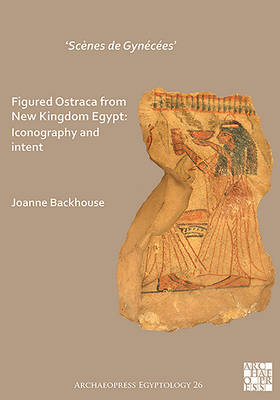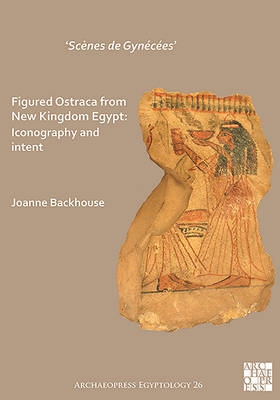
- Afhalen na 1 uur in een winkel met voorraad
- Gratis thuislevering in België vanaf € 30
- Ruim aanbod met 7 miljoen producten
- Afhalen na 1 uur in een winkel met voorraad
- Gratis thuislevering in België vanaf € 30
- Ruim aanbod met 7 miljoen producten
Zoeken
€ 37,95
+ 75 punten
Omschrijving
'Scenes de Gynecees' Figured Ostraca from New Kingdom Egypt: Iconography and intent examines images of women and children drawn on ostraca from Deir el-Medina, referred to in previous scholarship as 'Scenes de Gynecees'. The images depict women with children either sitting on beds in a domestic setting or in outdoor kiosks. The former are likely to show celebrations carried out in the home to mark the birth of a child. This may have included the bringing of gifts, mainly consumables and small household items. It is possible this was recorded in hieratic texts, also on ostraca, described in earlier research as gift-giving lists. The kiosk scenes may have depicted the place women gave birth in or more likely the place of confinement after birth. However, given the dense nature of settlement at Deir el-Medina it is possible these scenes were symbolic evoking the protection of Isis who nurtured Horus in the papyrus thicket of the Delta. In order to understand the purpose and intent of these images, repeat motifs are considered and their similarities to wall paintings within the village are examined. The objects are important as they represent rare examples of regional art, found only at Deir el-Medina. Also, women are the main protagonists in the scenes, which is unusual in Egyptian art as women are generally depicted alongside the male patron of the work, as his wife, daughter or sister. This publication represents the first systematic study of this material and it brings together ostraca from museums worldwide to form a corpus united contextually, thematically and stylistically.
Specificaties
Betrokkenen
- Auteur(s):
- Uitgeverij:
Inhoud
- Aantal bladzijden:
- 136
- Taal:
- Engels
- Reeks:
Eigenschappen
- Productcode (EAN):
- 9781789693454
- Verschijningsdatum:
- 27/02/2020
- Uitvoering:
- Paperback
- Formaat:
- Trade paperback (VS)
- Afmetingen:
- 206 mm x 284 mm
- Gewicht:
- 408 g

Alleen bij Standaard Boekhandel
+ 75 punten op je klantenkaart van Standaard Boekhandel
Beoordelingen
We publiceren alleen reviews die voldoen aan de voorwaarden voor reviews. Bekijk onze voorwaarden voor reviews.








